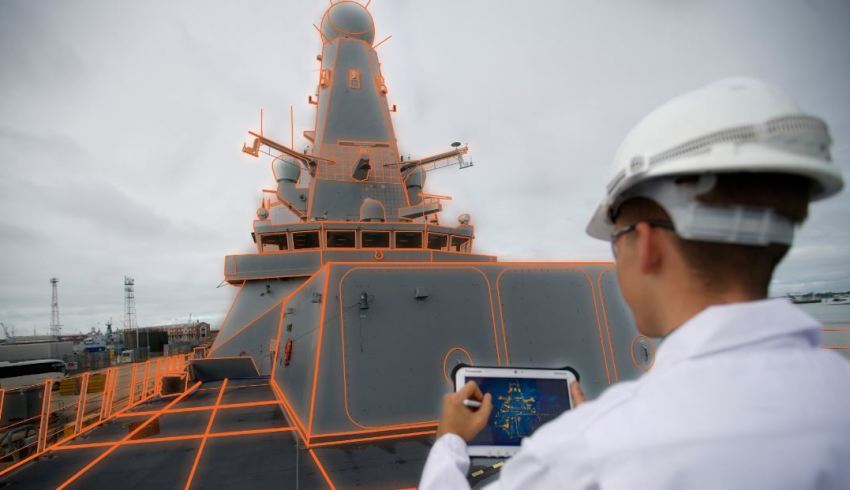Both BAE Systems and the UK government have committed to the transfer of more than $1.5 billion of technical design and intellectual property (IP) to Australia to support the national shipbuilding endeavour if it secures the $35 billion SEA 5000 project.
To continue reading the rest of this article, please log in.
Create free account to get unlimited news articles and more!
The SEA 5000 Future Frigates contender and the UK government said the technical design would equate to more than 5000 "work years".
The defence company said the transfer of data and digital design of its ships would not only allow local industry to build the fleet of nine frigates, but also ensure it can be upgraded and supported during its decades of service by Australian industry.
In September this year, BAE Systems upped its bid for the project, announcing it would transform Australia's shipbuilding industry with a $100 million digital shipyard that would bring the "ship to life" during its service, with intelligent systems, both on board and linked to those ashore, that will monitor the performance of the ship and its systems. The digital shipyard will also include an inventory of parts, including cost and acoustic signature, suppliers and their details.
BAE Systems is offering its Global Combat Ship-Australia (GCS-A), ,a variant of the UK’s Type 26 Global Combat Ship that is currently being manufactured at BAE Systems’ facilities in Glasgow, to replace the existing fleet of eight Anzac Class frigates.
The transfer of IP will include all ship parts, materials, systems and sub systems used to build the Type 26 frigate, knowledge BAE Systems said will mean Australian industry can potentially improve the stealth, flexibility and performance over the fleet's life.
BAE Systems Australia chief executive Glynn Phillips said the GCS-A, and its associated transfer of technology and IP, will support the Royal Australian Navy as well as Australian industry.
“The Global Combat Ship-Australia is a mature design that provides both stealth and flexibility to meet the future operational requirements of the Royal Australian Navy," he said.
"The transfer of data and the development of the digital shipyard will be important in the development of an enduring industry that will employ generations of Australians."
Earlier this year, BAE Systems confirmed more than 30 global companies supplying critical major parts for the Type 26 Global Combat Ship being manufactured in the UK will transfer bespoke technologies and capability to Australia should the BAE Systems bid be successful.
The UK defence firm also recently unveiled its workforce mobilisation strategy for the SEA 5000 project, with a recruitment strategy that will include an Early Careers Program to create a pipeline of apprentices and graduates throughout the build phase of the $35 billion project.
The company said it will commit to apprentices in steelwork, mechanical, electrical and technical trades, who will be central to the company’s strategy to ensure the right breadth and depth of skilled workers are brought into the multi-decade program. The company is anticipating that, at its peak, the Early Careers Program will have a population of around 150 apprentices, which will continue throughout the 35-year program.
A graduate program for business and engineering students will also offer opportunities for international placements across the company’s global business.
Along with BAE Systems, Fincantieri and Navantia are also tendering for the $35 billion project to design, construct and sustain the Future Frigates that will replace the Anzac Class frigates.
Regardless of the winner of the project, Australia’s anti-submarine Future Frigates will also use South Australian technology to shoot down long-range missiles as part of the government's efforts to counter threats from rogue states.
Adelaide-based Saab Australia will partner with Lockheed Martin Australia to provide an Australian tactical interface for the Aegis combat management system on the nine vessels that will begin construction in Adelaide in 2020.

 Login
Login







